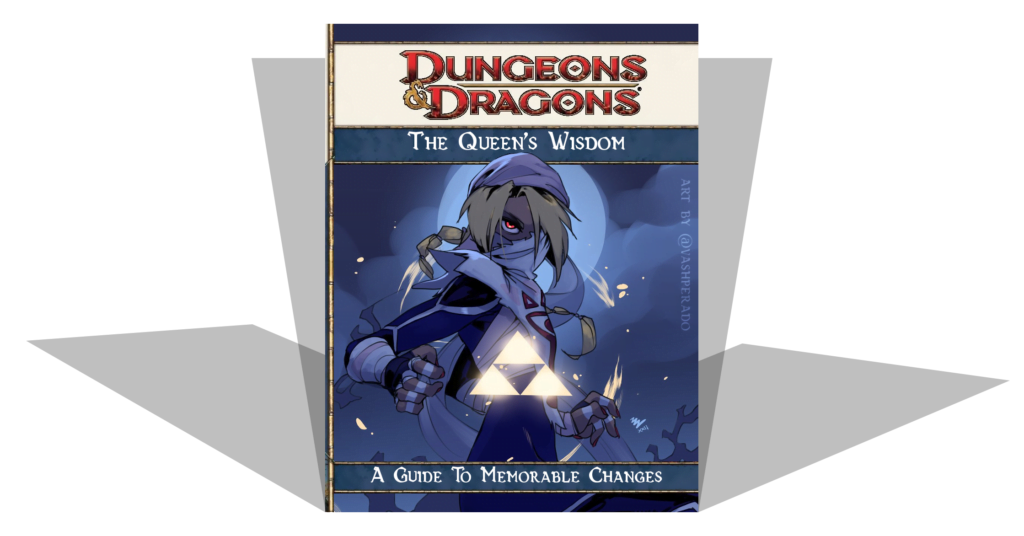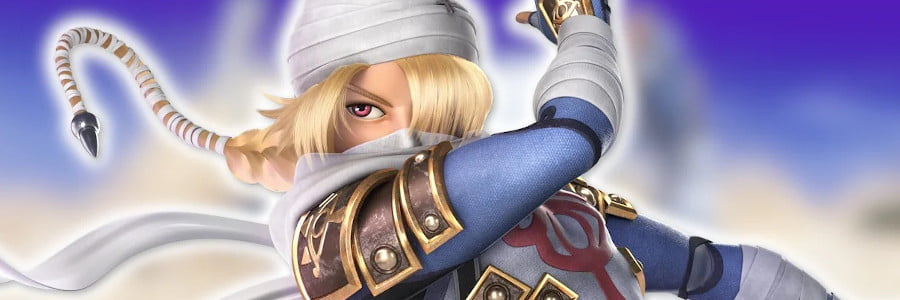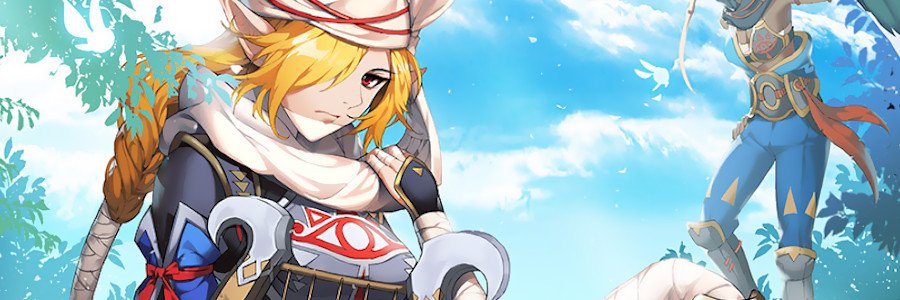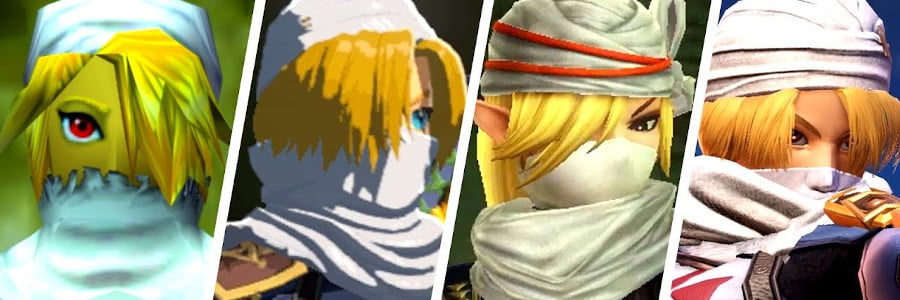In How To Be we’re going to look at a variety of characters from Not D&D and conceptualise how you might go about making a version of that character in the form of D&D that matters on this blog, D&D 4th Edition. Our guidelines are as follows:
- This is going to be a brief rundown of ways to make a character that ‘feels’ like the source character
- This isn’t meant to be comprehensive or authoritative but as a creative exercise
- While not every character can work immediately out of the box, the aim is to make sure they have a character ‘feel’ as soon as possible
- The character has to have the ‘feeling’ of the character by at least midway through Heroic
When building characters in 4th Edition it’s worth remembering that there are a lot of different ways to do the same basic thing. This isn’t going to be comprehensive, or even particularly fleshed out, and instead give you some places to start when you want to make something.
Another thing to remember is that 4e characters tend to be more about collected interactions of groups of things – it’s not that you get a build with specific rules about what you have to take, and when, and why, like you’re lockpicking your way through a design in the hopes of getting an overlap eventually. Character building is about packages, not programs, and we’ll talk about some packages and reference them going forwards.
It’s June, it’s Fox’s birthday month, and it’s pride month, which means I have to find a character who’s some variety of queer, and also one of Fox’s favourite characters. The good news is that every single one of Fox’s favourite characters is queer, because they’re her favourite characters, and that’s how that works. I’m a media studies scholar.
Let’s talk about a contentious argument from 2001, which we’re all over now. Let’s talk about Sheik, from The Legend of Zelda: Ocarina of Time.

Examining Sheik
Absolutely first things first, I need to make it clear, ahead of time, that I am not here to litigate the question of Sheik’s gender. Everyone approaches this story their own way, and the nature of the Ocarina of Time narrative is one where ambiguous narrative points are expanded on in a variety of different ways outside of that canon. Without a personal stake in this fight, I’m relying on my general first impression coupled with the later narrative I sort-of-read in the Ocarina Of Time manga, which I remember being pretty good. In that story, Sheik is a male character, and a separate identity to Zelda – someone who does not share her memories or her life experience. I’ll use he/him pronouns to refer to him. This isn’t to diminish your interpretation of the character at all, who I will need to remind you does not exist and will not have his feelings hurt based on what I say.
This is not to try and get into a fight about it, either. And if you want to come @ me with talk about how you can prove it one way or another, then let me say, congratulations, you win, I am defeated, farewell forever.
Sheik has only appeared in one game that seems to be about a single coherent story – you know, the kind of game that people declare as ‘canon’ vs’ non-canon’ though I’m sure we can all have a kind of fun arguing about what that means. By volume, Sheik’s appearances are mostly in Super Smash Bros, with an appearance in Hyrule Warriors, and finally his first appearance in the game The Legend of Zelda: Ocarina of Time. That appearance is the one that tends to be seen as ‘the canon’ appearance, from which we can glean, um…
Very little?
Sheik in the original Ocarina of Time kind of never fights anything. He sneaks around – we get visible proof that he’s just avoiding notice rather than some kind of magical invisibility – but we don’t see him do much. Or anything.
Fortunately, ‘this character doesn’t do anything’ is kind of a limited pool of options if you want to include the character in a lot of games, and that’s why in the Smash Bros series, Sheik develops a range of abilities to engage with people on an equal level with his peers, which include an unlicensed doctor, a duck, and a dog. Look, we’re making what we can out of what we get.
Sheik wears a full-body outfit that could be concealing all sorts of things, and appears to be some variety of magical, or, at least, air-sealed. In Smash Bros, he uses weapons like throwing knives, a chain, grenades, and the classic ‘ninja vanish’ style attack. Hyrule Warriors gives us an added angle, but also it’s a Musou style game, which is kind of oriented towards mass combat, like, twenty to a hundred dudes versus one player character. There’s going to be biases in how that combat style is presented.
Looking at all the things that go into Sheik then, what we have is:
- A teleport
- The ability to sneak around
- Ranged combat with thrown weapons
- Melee combat with knives and a chain
- Some stuff with a harp?
- Some believable ‘ninja’ style armour?
That’s a lot to start with, and what’s more, they are pieces that stay out of each other’s way. It’s not like D&D 4e only has teleports tied to (say) shields or wizards, which means that all of these pieces can be picked out and lined up separately.
When it comes to the ability scores, though, we do have one useful detail. Sheik, at some point, is the keeper of the Triforce of Wisdom. That gives us a handy thing to orient around. Whatever our builds do, whether strong or weak, he probably needs a good wisdom, and for that to matter.
Personally, I don’t get the energy off Sheik that he’s very strong; Link seems to be, what with all the deadlifting and barrel rolling into things and the swinging swords based on their weight, so for Sheik to be a lightly armoured, deft, stealthy figure who focuses on Wisdom, Intelligence and Dexterity by comparison seems to me to be the obvious point of opposition to Link.
The Essential Sheik
Glossary Note: Conventionally, the term used in D&D for this mechanical package is race. This is the typical term, and in most conversations about this game system, the term you’re going to wind up using is race. For backwards compatibility and searchability, I am including this passage here. The term I use for this player option is heritage.
The weapon choices we have presented to us don’t map easily to any single choice – nothing that stands out obviously that says ‘you have to use this one weapon because it’s obviously what works.’ You could treat the chain like a flail, using the Kusari-Gama or Alhauk, or you could use small weapons and wield two at a time to represent that kind of ‘swift stabbing’ that feels more ninja-like.
Heritage? Easy. We’re going to need a teleport of some variety, and that puts you squarely in the space of the Eladrin, with their Fey Step ability. There are also some really cool feats supporting it; the most obvious one being Fey Charge (available only to fighters) and Eladrin Swordmage Advance (available only to Swordmages). The Swordmage Advance is heroic tier, and you can get some good damage out of it if you pick a class with a good basic attack. In fact, if you start with a fighter or a swordmage and bolt the other one on, you get both, and they’re both really good together – charging into an enemy, getting two basic attacks on them, then next turn being able to do that again.
We’re not going to use those effects. They’re options on the table and you can grab them if you want them, but as strong as they are, they sort of present one way to build the character. You have to build into the swordmage or fighter at base, and then a lot of the build is dedicated to just that one dimension. It’s not a set of choices, it’s sort of one single build.
The Eladrin doesn’t get a Wisdom bonus, but they do get a Dexterity bonus. This makes maximising your dexterity preferential, and having a strong wisdom as a rider. Good news; That gives us some really easy options to work with.
Also, because not every class gets access to Stealth as a class skill, I recommend the Assassin background. That adds Stealth to your class skill list, and Arcane as well – which can be great for making a sneaky person who knows Secrets and can make arcane machines do weird things, or maybe even learn magical rituals.
Build 1 — Monk
Oh hi it’s the monk. The monk is a strong class which has a lot of mobility options. It relies on dexterity for its attacks and wisdom for its riders. None of this is meant to make the monk sound bad. I find it a bit dull as an option because the monk does so much ‘stuff.’ If you want the musou-style ‘beats up a hundred guys at once’ style of the Hyrule Warriors character, the monk will give you a lot of powers that fit that.
Build 2 — Avenger
If you chase the Avenger I’m going to recommend you lean into the ‘chain weapon’ element of Sheik and use one of the larger flails. The damage and proficiency bonus isn’t amazing, but avengers benefit from big weapons and can use Oath of Emnity to make their hits more reliable. They even have a at-will slide power that can work with Flail Expertise and prone people easily.
The Avenger does get an Eladrin teleport perk too: You can take long teleports to close with your oath target, with Feyborn Pursuer.
Build 3 — Scout
The scout is a simplified character class from the Essentials book Heroes of the Forgotten Kingdoms. It’s a ranger variant that trades the flexibility and power of the ranger’s power choices (and rangers have some sweet dailies) in exchange for a much more stable ‘out of the box’ style character and a dexterity and wisdom as your key stats.
You can still jam on the Eladrin teleport support with this, and what’s more, there are also some effects that the Scout has that include teleports themselves. It’s definitely one of the ‘easier’ options if you like your Sheik daggery.
Junk Drawer
There is a class, on its own, that can do ‘Sheik stuff’ out of the box straight away – the Swordmage. Up front, the Swordmage gets a bunch of support like the White Lotus feats, it gets teleport support, it even gets a teleport at level 1. If you wanted to jump on it class-first, then an Eladrin Swordmage will do it. Swordmages are based on intelligence and strength though, not wisdom or dexterity, and they don’t really have stealth as an option. If you’re okay with the different ability score priorities, the Swordmage gets you straight into Sheik if you take the Assassin background for Stealth. It’s also a class that can do defender stuff, as opposed to striker stuff.
There are also some builds that get a lot more complicated if you want to introduce Sheik Stuff to them. I really wanted to do a build with the Bard, but Bards are charismatic, and I don’t feel like Sheik is exactly an overwhelming social presence. There’s also the Artificer, if you want to lean in to the explosives angle you see Sheik use in Smash Bros Ultimate, flinging bombs and making devices that work through magic.
There’s a lot of room to play with this character. Be it from the most top level idea, of being a gender-changing shape-shifting mode-switcher character, down to the kind of role you want him to have in a party. What I think is most exciting about him is that there is room to play. Sheik can be a girl, a boy, a trans character of either gender, nonbinary or both.
What’s important to remember though is whatever is going on, Sheik is very cool, and also, very hot.
The Sheik art in the book cover was by Vashperado.
This article was reposted from Talen’s personal blog.
You can find the original at Press.exe




